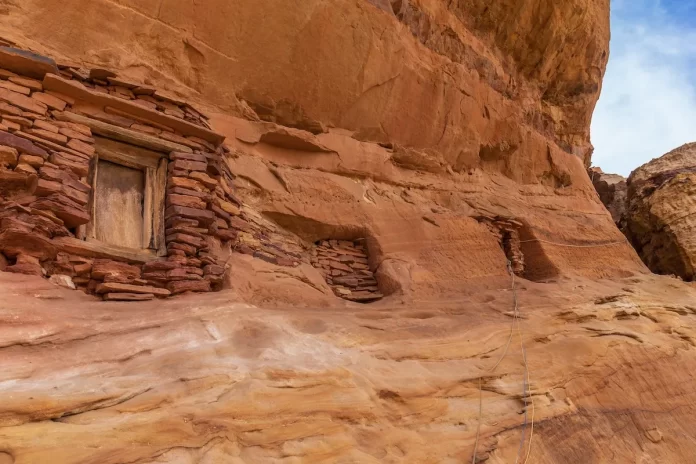Abuna Yemata Guh, the world’s inaccessible church is located in Ethiopia. It is also regarded as the most dangerous church in the world. It stands 2580 meters above sea level and is built on a mountain. It has been carved from the inside out and has earned the nickname “Rock-Hewn” Church. It was constructed in the 5th century by a hermit and monk named Abuna (Abba) Yemata. Having survived over 1500 years, to reach this church a visitor must traverse along numerous narrow pathways and then climb nearly 300 meters of cliff of sheer rock creeping by hand. The rock surface is so smooth that shoes have to be removed for a successful climb. The entire journey has to be undertaken with almost no safety measures. If you think the hardest part is over, you are greatly mistaken. Next, you face another challenge. You should use a 250-meter-long natural stone bridge flanked by hundreds of meters deep cliffs where one misstep could be fatal. Upon reaching the summit you enter the church through a cave where you find spectacular paintings preserved from the 15th century. Nearly every wall, dome and pillar is adorned with paintings depicting the nine saints and 12 apostles. This challenging route has traditionally been deemed a test of faith for the pilgrims seeking spiritual guidance.
The walls and ceilings are decorated with murals depicting biblical scenes and classic Christian iconography.
Abuna Yemata Guh is considered as one of the most important sites of pilgrimage in Ethiopia. The church is a testimonial to the ingenuity and devotion of its builders, and its remote location adds to its already obvious spiritual significance. The church’s frescoes provide valuable insights into the art and iconography of early Christianity in Ethiopia.
Abuna Yemata Guh is one of the best-preserved rock-hewn churches in the country. Its unique architecture, invaluable murals, and remote location have made it a UNESCO World Heritage Site.
The church is a treasured cultural and spiritual landmark, and its preservation is essential to understanding Ethiopia’s rich religious and artistic heritage.



